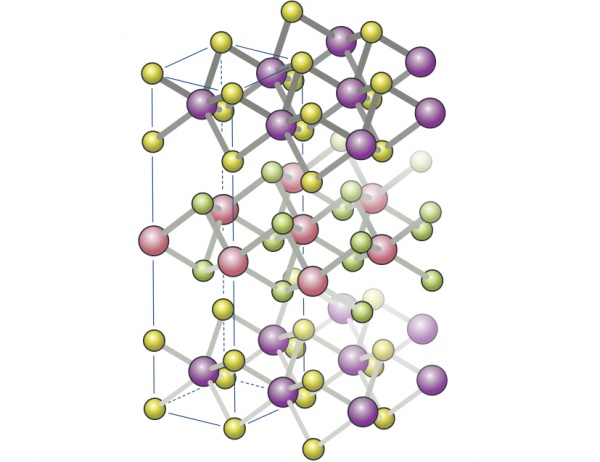|
researchers at north carolina state university have discovered a method for controlling the thermal conductivity of two-dimensional materials, which could be a breakthrough for using those materials to dissipate heat within electronics devices.

molybdenum disulfide. (wikimedia commons)
the nc state researchers published a report in october’s issue of nature communications, “tuning thermal conductivity in molybdenum disulfide by electrochemical intercalation”.
the abstract of the report stated:
“thermal conductivity of two-dimensional (2d) materials is of interest for energy storage, nanoelectronics and optoelectronics. here, we report that the thermal conductivity of molybdenum disulfide can be modified by electrochemical intercalation.
“we observe distinct behaviour for thin films with vertically aligned basal planes and natural bulk crystals with basal planes aligned parallel to the surface. the thermal conductivity is measured as a function of the degree of lithiation, using time-domain thermoreflectance.
“the change of thermal conductivity correlates with the lithiation-induced structural and compositional disorder. we further show that the ratio of the in-plane to through-plane thermal conductivity of bulk crystal is enhanced by the disorder. these results suggest that stacking disorder and mixture of phases is an effective mechanism to modify the anisotropic thermal conductivity of 2d materials.”
in addition to researchers from nc state, there were researchers from the university of illinois at urbana-champaign and the toyota research institute of north america. the team worked with molybdenum disulfide (mos2), in which heat is conducted at 100 w/mk in plane but only 2 w/mk out of plane.
by adding lithium ions to the mos2 researchers put the layers of the 2-d material out of alignments and forced the compound to restructure its component atoms. when the lithium ions reached a ratio of 0.34, heat became twice as likely to travel in plane. as the ratio shifted one direction or another, researchers saw the thermal anisotropy ratio change at a regular amount, meaning that they could “tune” the thermal conductivity of the material.
read a full description of the findings on the nc state website, https://news.ncsu.edu/2016/10/tuning-thermal-conductivity-of-2-d-materials.
|